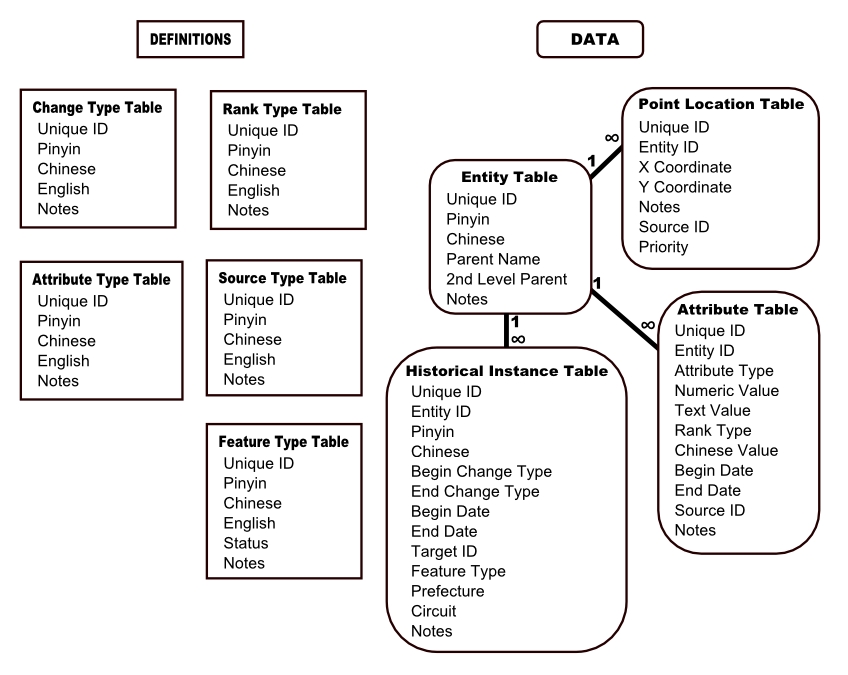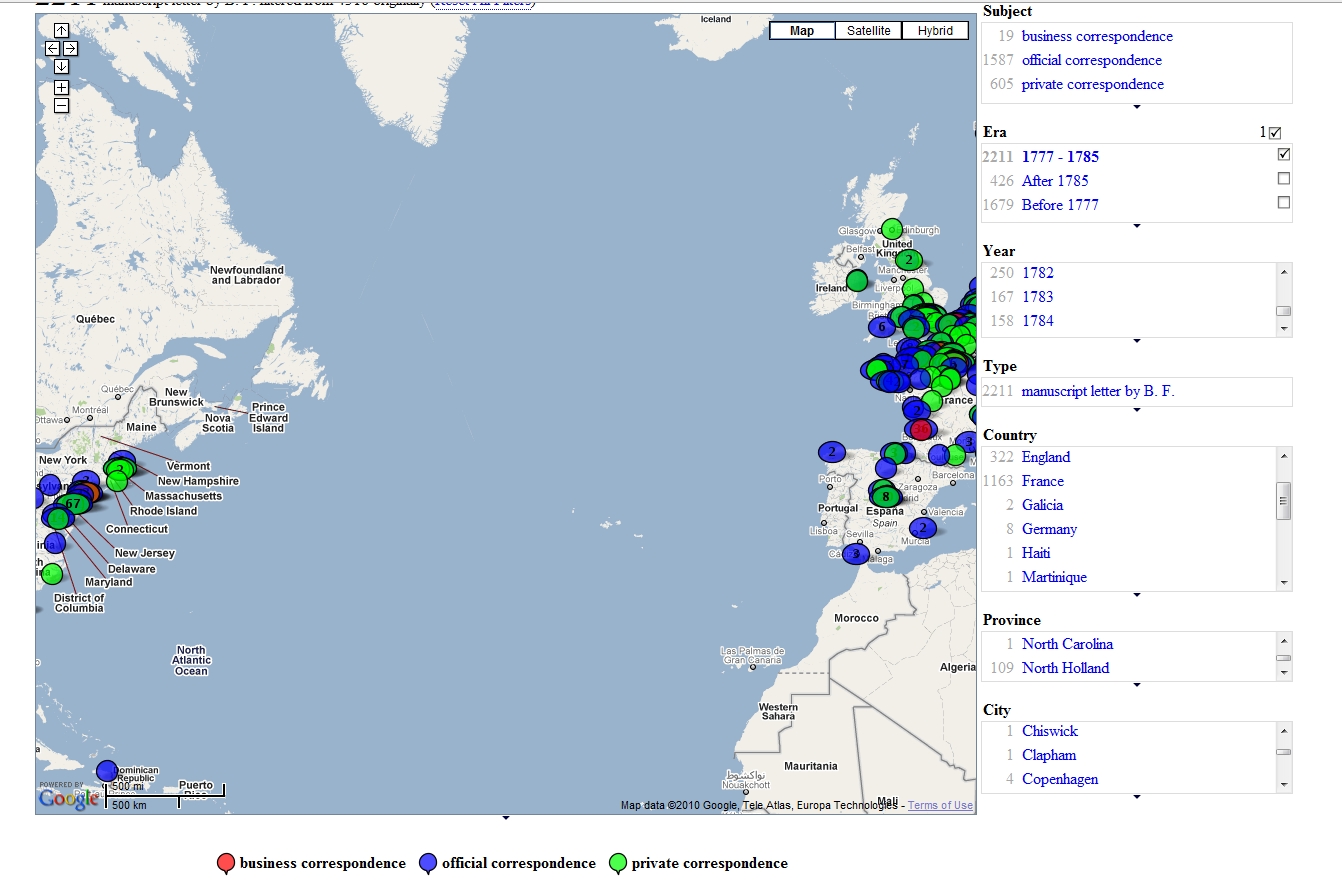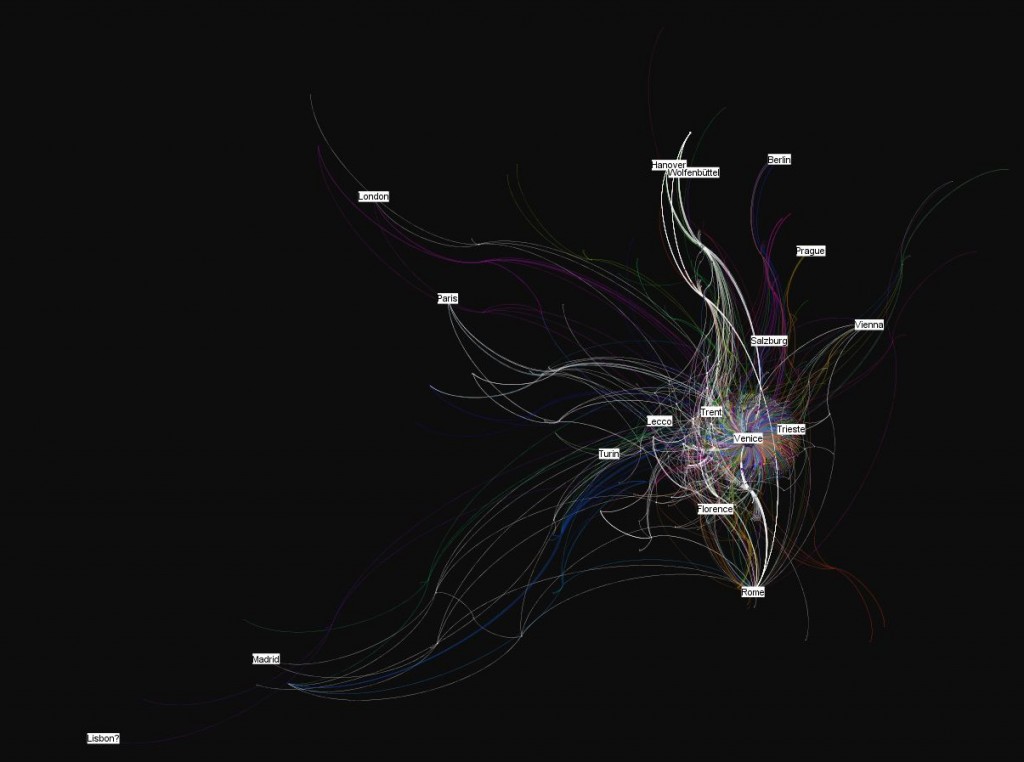The term digital scholarly media can refer to one of many products created in academia to visualize, analyze or similarly treat with data and claims traditionally presented using linear, narrative text, typified by monographs and journal articles.
 For example, the image on the right visualizes changing patterns of travel by English and Irish tourists in Italy during the late 18th century. Using GIS (Geographic Information Systems, popularly thought of as the ESRI product ArcGIS) to ask spatial analytical questions requires a reasonably large set of geo-located data. This kind of scholarly digital media is best suited for analyzing spatial patterns of groups or using geography and environmental data to recreate historical landscapes. While the current attitude in the field of spatial history is that historic GIS is not the only or often even the best way to analyze historical questions of space, it still remains one of the most high-powered analytical tools available in the digital humanities.
For example, the image on the right visualizes changing patterns of travel by English and Irish tourists in Italy during the late 18th century. Using GIS (Geographic Information Systems, popularly thought of as the ESRI product ArcGIS) to ask spatial analytical questions requires a reasonably large set of geo-located data. This kind of scholarly digital media is best suited for analyzing spatial patterns of groups or using geography and environmental data to recreate historical landscapes. While the current attitude in the field of spatial history is that historic GIS is not the only or often even the best way to analyze historical questions of space, it still remains one of the most high-powered analytical tools available in the digital humanities.
 Most scholarly digital media will require the implementation of some kind of database to store the information being analyzed and visualized. One of the most difficult problems of digital humanities data modeling is representing the complex and nuanced knowledge so familiar to humanities scholars. Databases were designed to work with concrete, unambiguous records–your medical record or your bank account–and you cannot use the same models to represent historical locations and actors, literary themes or ethical structures. Even the most concrete of historical analyses, focused on tracking change in administrative units in the well-documented and bureaucratic Song Dynasty of China, required the creation of a data model that affords a subtle sense of “place” that is not reliant on location, name or political rank. An elegant data model will not only allow scholars to best pursue their initial line of inquiry, it will allow them to explore new lines of inquiry that may emerge after analysis of the data.
Most scholarly digital media will require the implementation of some kind of database to store the information being analyzed and visualized. One of the most difficult problems of digital humanities data modeling is representing the complex and nuanced knowledge so familiar to humanities scholars. Databases were designed to work with concrete, unambiguous records–your medical record or your bank account–and you cannot use the same models to represent historical locations and actors, literary themes or ethical structures. Even the most concrete of historical analyses, focused on tracking change in administrative units in the well-documented and bureaucratic Song Dynasty of China, required the creation of a data model that affords a subtle sense of “place” that is not reliant on location, name or political rank. An elegant data model will not only allow scholars to best pursue their initial line of inquiry, it will allow them to explore new lines of inquiry that may emerge after analysis of the data.
Compared to spatial analysis, though, text analysis is well-entrenched and supported in the humanities. Still, with the rising number of scanned and corrected books, along with the growing methodological maturity demonstrated at Stanford and other top research universities, there remains significant untapped potential in the area of text analysis.
 It is important to note that not all scholarly digital media is created for the purpose of analysis. The presentation of research, whether at a conference or for a more public audience, can be facilitated by creating dynamic maps that allow the scholar or scholars to demonstrate change over time or recapitulations of the data from different perspective. These same maps also allow for a more interactive presentation of data, one that affords the scholar the ability to respond immediately to questions or criticism, rather than being tethered to a static Powerpoint presentation. The maturity of lightweight tools that require little retooling to present a wide variety of data has made this process readily achievable. For example, the Simile Exhibit package, originating at MIT, gives access to a lightweight timeline, map and database sorting mechanism that requires only data structured in JSON format and a bit of html. While Exhibit is not robust enough to handle large amounts of data, it can work well with a small slice of a large dataset, such as the approximately 4500 letters of Benjamin Franklin, and give the scholar the ability to casually browse such data or to explore it to develop new lines of inquiry.
It is important to note that not all scholarly digital media is created for the purpose of analysis. The presentation of research, whether at a conference or for a more public audience, can be facilitated by creating dynamic maps that allow the scholar or scholars to demonstrate change over time or recapitulations of the data from different perspective. These same maps also allow for a more interactive presentation of data, one that affords the scholar the ability to respond immediately to questions or criticism, rather than being tethered to a static Powerpoint presentation. The maturity of lightweight tools that require little retooling to present a wide variety of data has made this process readily achievable. For example, the Simile Exhibit package, originating at MIT, gives access to a lightweight timeline, map and database sorting mechanism that requires only data structured in JSON format and a bit of html. While Exhibit is not robust enough to handle large amounts of data, it can work well with a small slice of a large dataset, such as the approximately 4500 letters of Benjamin Franklin, and give the scholar the ability to casually browse such data or to explore it to develop new lines of inquiry.
These are only a few possible ways to conceive of scholarly digital media. The use of interactive environments or dynamic systems (similar to games) to explore complex, multi-part historical, philosophical or linguistic problems has yet to achieve notable success, but the growth of digital humanities centers around the world and the increasing amount of humanities scholarship directed toward repurposing entertainment software for serious games indicates this is likely to change. Along with the aforementioned well-established methods of utilizing digital means to ask traditional humanities questions, it’s obvious that the production of scholarly digital media can take many forms, limited only by the ambition of the scholar and the data available.
Peer Review
In their January 2010 report, “Assessing the Future Landscape of Scholarly Communication,” The Center for Studies in Higher Education detailed the difficulties of addressing peer review of new forms of scholarly communication as well as data sets that underlie the scholarship. This presents unique problems in developing a suitable pool of peer review talent that is both comfortable with scholarly claims within the domain of the research while at the same time harnessing technical talent capable of evaluating the software and data used to produce the research. It also highlights opportunities for scholars new to the digital humanities to establish themselves by focusing scholarly substance over visual flair.
While current academic success in the humanities relies on research presented in high-impact publications, there are growing avenues for the presentation of scholarly digital media, such as the Coordinates series from UC Press for GIS-oriented work, as well as the University of Michigan Press/HASTAC Publication Prize for Notable Work in the Digital Humanities for “critical and rigorous engagement in the field of Digital Humanities”. Identifying these venues in the formulation of prospective projects is a priority.
As top research universities and private entities begin to recognize digital scholarly media production, it seems likely that peer review will prove to be the avenue through which established research one institutions compete with established digital humanities centers. By positioning digital scholarly media production at Stanford within this new emphasis on peer review, nascent projects can change the game fundamentally and compare favorably with long-established projects that are larger but not as well documented or reviewed.

